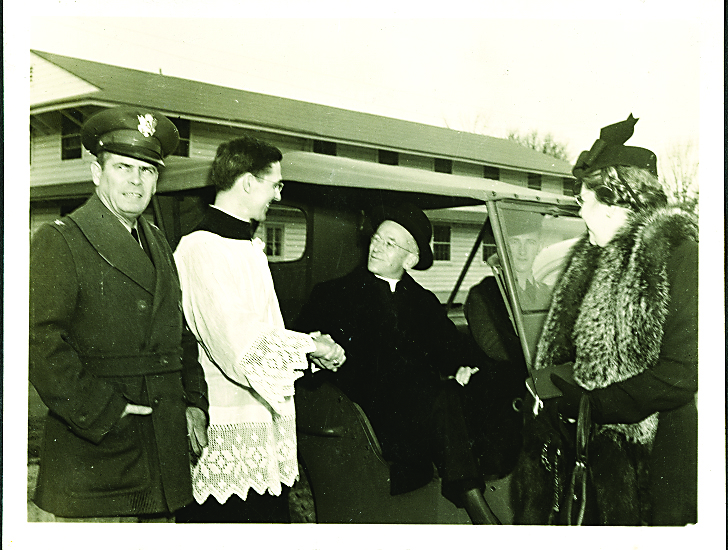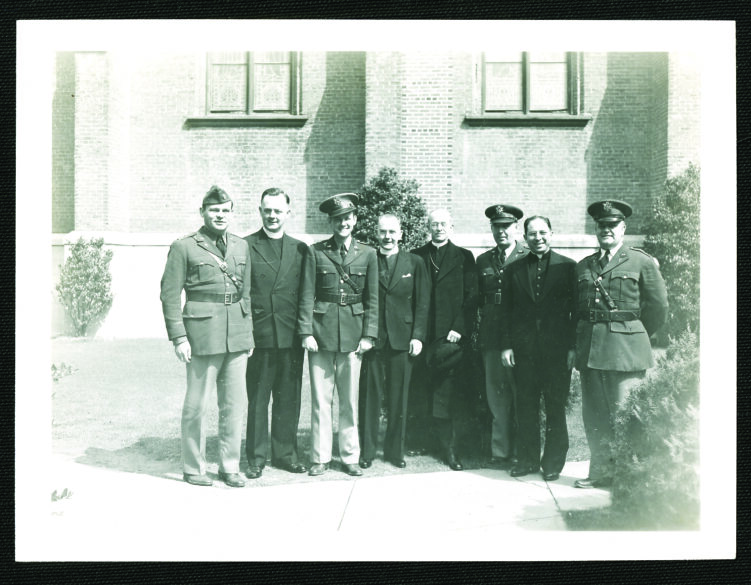From the Archives
By Mary Woodward
JACKSON – This week we marked the anniversary of the bombing of Pearl Harbor in 1941. In thinking about all the wars going on in the world today, this anniversary spurred me to check Bishop R.O. Gerow’s diary for what he wrote about the Pearl Harbor attack.
Bishop Gerow’s diary, which is in six volumes and covers 1924–1966, gives us a lot of background to local, state, national and international events as they happened. As we begin this new liturgical year, I thought I would highlight some passages about the Dec. 7 attack, and other mentions of WWII from his diary.

1941: December 7 (Sunday):
“This morning I confirmed a class of fifty-four in the Sacred Heart Church in Greenville, and then after dinner in Greenville I returned to Natchez.
“In the automobile from Greenville to Natchez I was busy with many things, especially preparing some talks that I would have to give in the near future, and I did not turn on the radio. When I returned home, I was astounded to learn of the treacherous attack of the Japanese upon the American forces in Hawaii, at the very time that the Japanese representatives were in Washington discussing with the American authorities a peaceful settlement of their problems in the Pacific.”
December 8 (Monday):
“Today, President Roosevelt addressed Congress, telling them of the attack of the Japanese upon the Hawaiian Islands and our naval and air forces there, and asking them to declare that a state of war exists between the United States and the Japanese Empire. Under the circumstances there was nothing else that the Legislature could do.
“Accordingly, both the Senate and the House unanimously declared a state of war to exist – except for one vote in the House, a woman Representative from Montana, Jeannette Rankin, the same who in 1916 voted against the entrance of the United States into the World War I.
“With this exception of the Representative from Montana, the whole Congress of the United States has been welded into one by the events of Pearl Harbor of yesterday. Even the extreme Isolationists and all those who had differed with the President up to now are one with him in his decision that the declaration of a state of war is our only alternative.”
1943: August 2 (Monday):
“Left Greenwood this morning about 8:30 – had dinner with Father Manon at Oxford – and then after a slight rest proceeded with Father Manor over to Como to visit the camp where there are several thousand Italian prisoners of war.
“A short distance outside the town of Como, the Government has erected a camp with buildings for barracks, mess halls, etc., etc., similar to the buildings in the camp in which the American troops in this country are quartered. The camp at Como, however, is surrounded by a double barbed-wire fence and protected by towers erected at intervals along the enclosure, in which soldiers of the American army manned with proper weapons keep guard day and night lest the prisoners escape.

“In the Camp the Italian officers are separated entirely from the enlisted men and they are not allowed to mingle. I was allowed into the compound of the enlisted men; I was told, however, that I would not be allowed into the compound in which the officers were quartered. The reason for this I do not know. However, there are four Italian priests, formerly chaplains of the Italian army, who are prisoners in the camp, and these are able to take care of the spiritual needs of both officers and men.
“Father Manon has supplied them with all things necessary for the celebration of the Mass, including vestments, altar stones, candles, etc., and he keeps them supplied with wine and hosts.”
These are three short snippets of Bishop Gerow’s writings about WWII. In the next installment, we will look at some of the priests of our diocese who served in the war, either at home or abroad. And we will explore the POW camp at Como a little more in depth. During his visit mentioned above Bishop Gerow addressed the captives in a chapel they had designed and decorated.
Each year on Dec. 7, Pearl Harbor Survivors, veterans, and visitors from all over the world come together to honor and remember the 2,403 service members and civilians who were killed during the Japanese attack on Pearl Harbor on Dec. 7, 1941. A further 1,178 people were injured in the attack, which permanently sank two U.S. Navy battleships (the USS Arizona and the USS Utah) and destroyed 188 aircraft.
On Aug. 23, 1994, the United States Congress designated Dec. 7 as National Pearl Harbor Remembrance Day. Every year, remembrance events are held at the Pearl Harbor National Memorial, culminating in a commemoration ceremony on Dec. 7. (From the National Pearl harbor Remembrance website: https://www.nps.gov/perl/learn/historyculture/national-pearl-harbor-remembrance-day.htm)
Let us pray for peace!
(Mary Woodward is Chancellor and Archivist for the Diocese of Jackson.)
